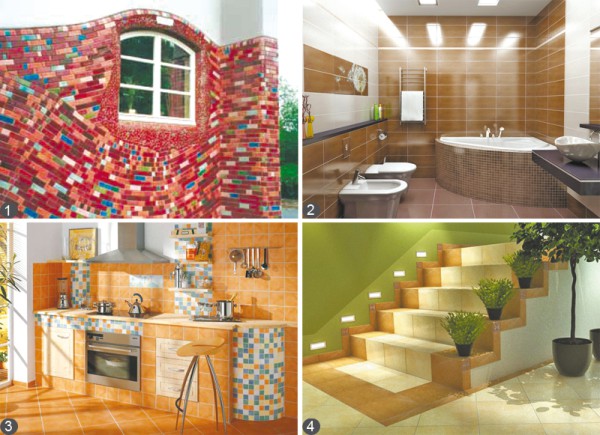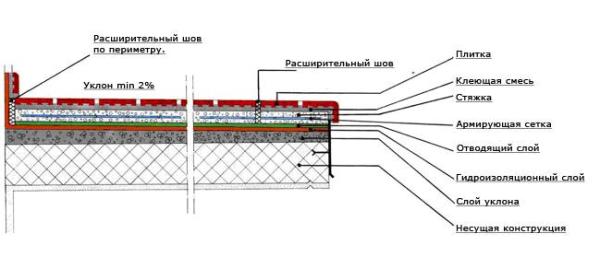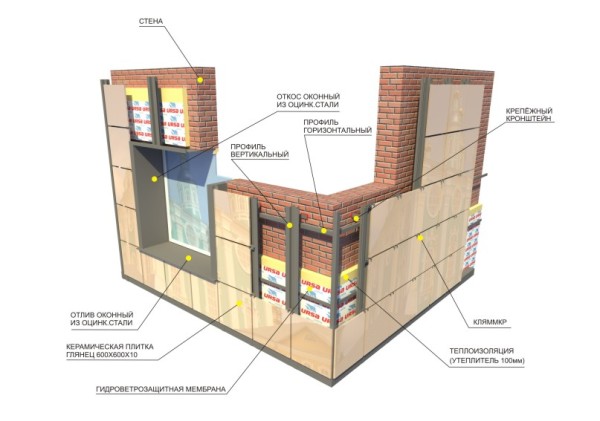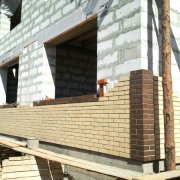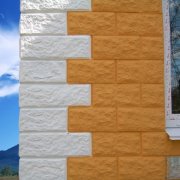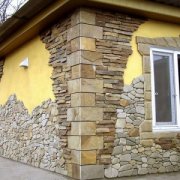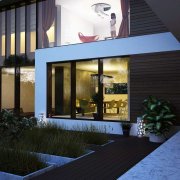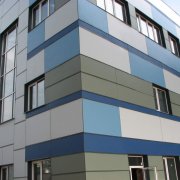Facing with porcelain tiles
When a beautiful and durable material was needed in construction and repair work, ceramic tiles were produced. But over time, manufacturers had a desire to improve the material, and there was a ceramic tile facing. It is more resistant to dirt, frost and wear.
The content of the article
Characteristics of porcelain stoneware
With a single firing of the total mineral mass, at a temperature of 1300 degrees, a unique material appeared according to its characteristics, this is porcelain tile.
Advantages of porcelain stoneware:
- The main advantages include strength and durability from exposure to the external environment.
- The most important thing is the drawing, which is located on the front side of the material, this is not a thin layer, but an image over the entire thickness, which does not change from the degree of abrasion.
- Porcelain facing tile can imitate any natural stone and wood, including drawing and texture.
Also, the material has a wide variety of surfaces, found:
- Matt
- Polished.
- Structured.
- Prepolated.
Note. The color palette is close to the natural color scheme. But there are designer custom-made series that differ in the brightness of colors and a peculiar texture.
Porcelain cladding plates are also distinguished by unlimited sizes:
- From 100 x100 mm.
- Up to 600x1200 mm.
- Mask shapes that are able to manipulate area.
Note. The above qualities indicate that the material ceased to be primarily technical, but stepped into the interior design and gave them novelty and opportunities for the implementation of various design innovations.
Facing porcelain tile has a number of technical characteristics:
- The material is super abrasion resistant. With the duration of the operational period, its external texture does not change. By technical parameters, porcelain tile is much stronger than natural stone.
- Water absorption indicators are very low, this indicates frost resistance, which allows the use of material for external decoration (design of facades).
- Increased resistance to aggressive environments. Resists any contact with chemicals.
- Environmental friendliness of the material allows its use in public places and in residential buildings.
- Porcelain tiles are able to retain heat for a long time. For this reason, the material is often used for the equipment of the "warm floor" system.
Attention. The duration of the operating period depends on how well the installation is done and the instructions are followed.
What are the requirements for installing the material
In order for the material to last a long time, certain requirements must be observed.
Facing with ceramic tiles is determined by the following functionality:
- Installation should only be done on a flat surface.
- The material does not need to be soaked before laying.
- For installation, a special adhesive solution is used.
- The mixture must be applied with a special spatula and processed gear.
- During installation, a certain direction should be followed.
The seams at the finish are filled with special grout.
Note. If you follow the instructions, the material will last a long time.
Porcelain stoneware facing tile
Given that the facades are constantly exposed to harsh climatic conditions, here you will need reliable material that is able to withstand any conditions, including sudden temperature changes. One of the reliable materials is porcelain stoneware.
Consider the types of facade tiles:
- The most popular material for facades is ceramic granite.
- Natural stone tiles are also used, but the price of finishing work will increase significantly.
Note. It is best to use an inexpensive artificial analogue, which does not differ in its characteristics.
Why ceramic granite is used for facades
The ingredients include standard ingredients, but the strength of porcelain is much higher than that of ceramic tiles.
Advantages of clinker tiles:
- Clinker tiles differ from keramonranita in the method of manufacture and appearance.
- Clinker tiles for the most part imitate bricks of different shades and colors.
- This material has high stability and excellent strength.
Installation Methods
There are several ways of material, it all depends on the size and appearance of the tile, as well as if additional insulation is required.
There are several installation methods:
- Gluing method.
- Installation on the frame.
Gluing method:
- Finishing the facade with this method according to technology resembles the laying of floor tiles.
- You can do the work yourself. The adhesive composition is used special frost-resistant, able to withstand external aggressive influences.
Note. Facing is carried out at a certain temperature (from 5 to 25 degrees Celsius). Then the adhesive composition will not lose its properties.
Installation Instructions:
- Initially, the surface area is calculated and the area of the door and window openings.
- Then the length of all the corners is measured and the number of corner elements is calculated. As a rule, the packaging indicates the number of plates per 1 sq.m.
- Before laying, the walls are leveled and primed. When leveling the wall with plaster, a reinforcing mesh is applied.
- A horizontal line breaks off at the lower level and the adhesive composition is applied over most of the facade.
- Laying tiles starts from the corner, while maintaining the thickness of the seams.
Tip. To finish the tiles with high-quality, it is recommended to apply the adhesive solution on the tile and the base surface.
If during the installation process you need to trim the tiles, then you need to do this using a special disk. The wireframe method can be studied in detail using video, but you should remember that a professional approach is needed here.
